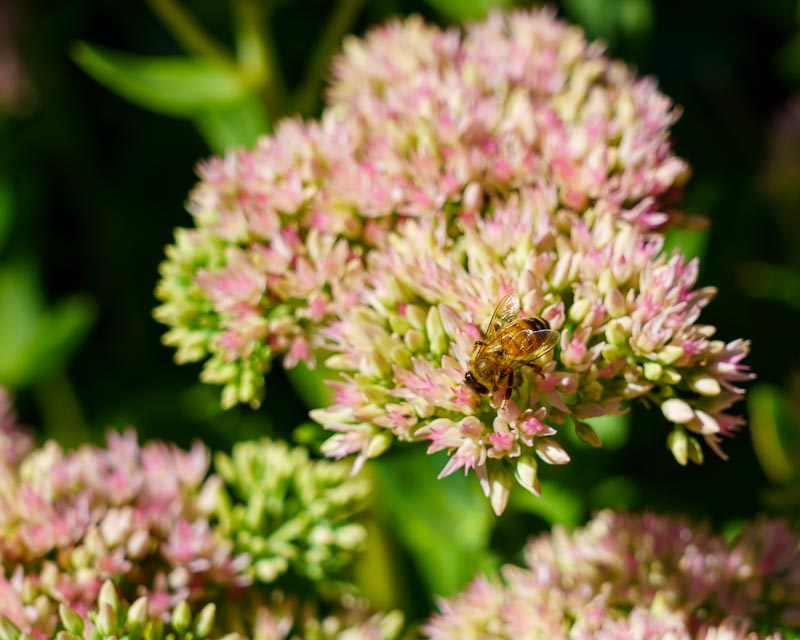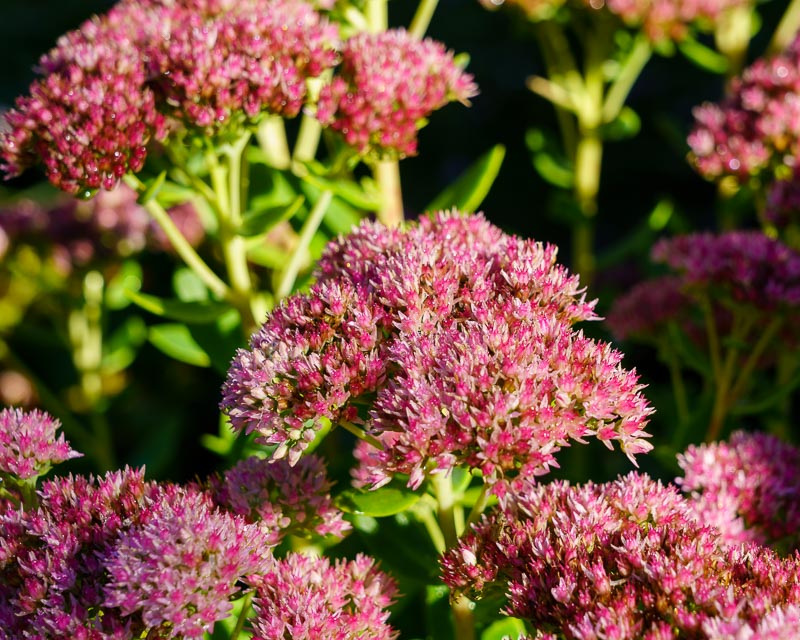Autumn Joy Stonecrop
| Attribute | Value |
|---|---|
| Common Name | Autumn Joy Stonecrop |
| Botanical Name | Hylotelephium telephium 'Herbstfreude' |
| Mature Size | 1.5–2 ft. tall and wide |
| Sun Exposure | Full |
| Soil Type | Sandy, well-drained |
| Soil pH | Acidic, neutral, alkaline |
| Bloom Time | Summer, fall |
| Flower Color | Pink, rust red |
| Care | When given the right growing conditions, Autumn Joy stonecrop requires minimal maintenance. Selecting a planting site that has lots of light and excellent soil drainage is key for healthy growth. Sitting in soggy soil can kill the plants.1 But given the right conditions, you generally won’t have to do much in the way of watering or feeding your stonecrop. Space plants at least a foot apart in the garden; they will gradually fill in and form clumps. If you wish, you can cut back the stems in the late spring to limit their height and promote thicker, bushier growth. Some gardeners cut down the stems in the fall after the foliage begins to depreciate, but the stems can also be left to provide winter interest and cut down in the spring before new growth starts. Birds will feed on the dried flower heads over winter. |
| Soil | This plant thrives in sandy or gravelly soil with sharp drainage. But it will tolerate loamy soil provided it is well-drained and not allowed to remain constantly damp. |
| Water | Autumn Joy does not need much water and has excellent tolerance for drought. Even in the heat of summer, light watering every two weeks or so is sufficient. More frequent watering can cause the roots to rot. |
| Temperature and Humidity | This plant tolerates a wide range of temperatures. It can thrive in extreme heat, and it often continues to look attractive in the fall until it has been exposed to a few frosts. Then, it dies back and goes dormant for winter. Humidity is typically not an issue for the plant as long as the soil doesn’t retain excessive moisture in areas with high humidity. |
| Fertilizer | Autumn Joy grows well in poor soils, so feeding is typically not necessary. The plant might like a light spring feeding with a balanced fertilizer if you have very poor soil. But excessive fertilizing can cause leggy growth. |
| Pruning | If you wish, you can cut back the stems in the late spring to limit their height and promote thicker, bushier growth. Some gardeners cut down the stems in the fall after the foliage begins to depreciate, but the stems can also be left to provide winter interest and cut down in the spring before new growth starts. Birds will feed on the dried flower heads over winter. Sedum plants respond well to pruning and tend to form a bushier plant in the next burst of spring growth. Use sharp pruners or garden shears to take the stems back to within an inch (2.5 cm) of the soil in early spring. Take care to avoid the new growth that is coming up. Pinching will enforce bushier plants. Pinch off the new growth near the soil and it will form a more compact stem and thicker growth. |
| Overwintering | This plant is hardy to USDA zone 3 and does not need protection even in climates with harsh winters. It will die back, assuming you do not choose to prune it back in the fall, and will bounce back in the spring with fresh foliage and blossoms. |
| Source | https://www.thespruce.com/autumn-joy-sedum-2132607 |



